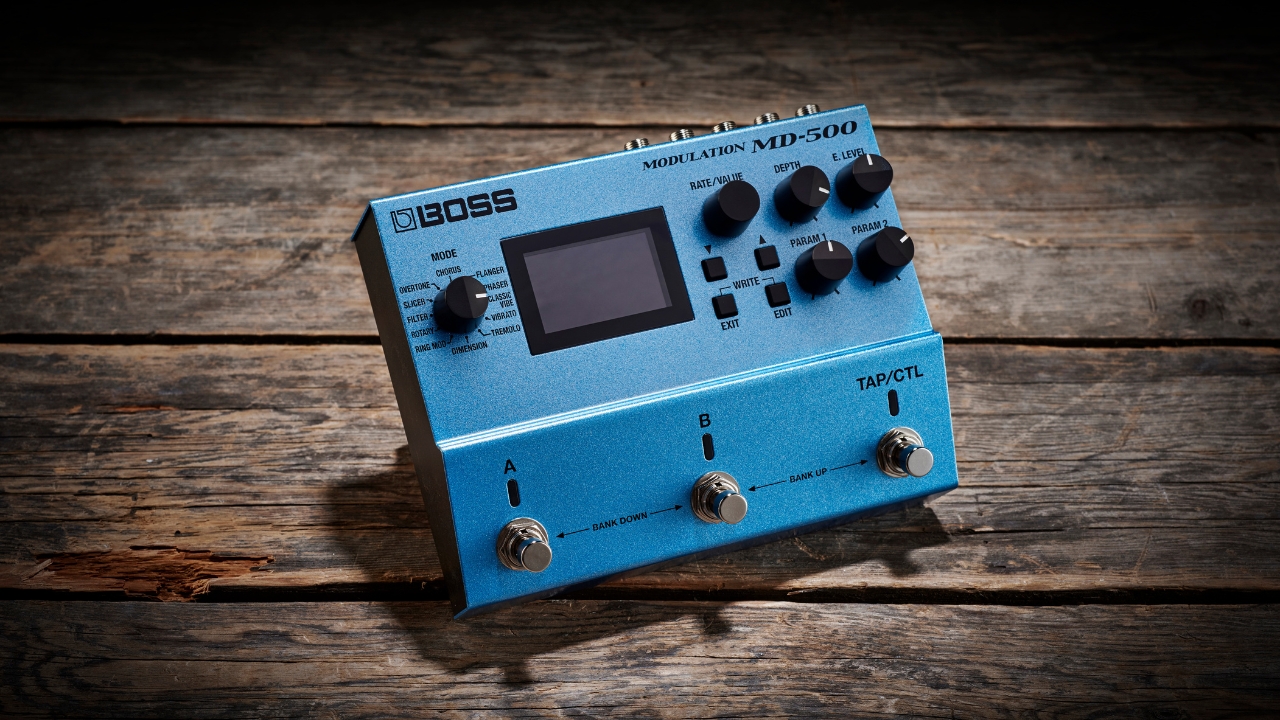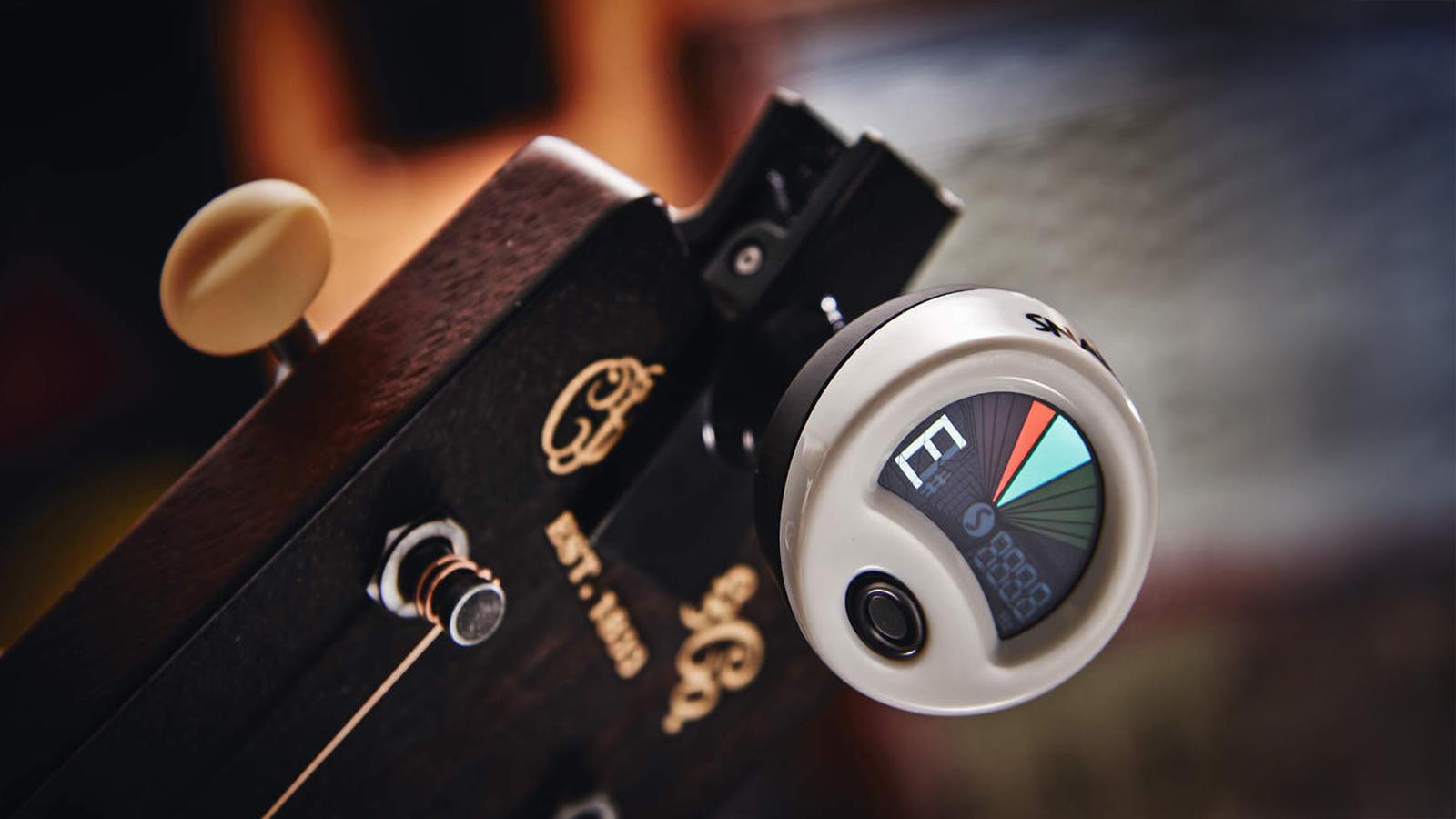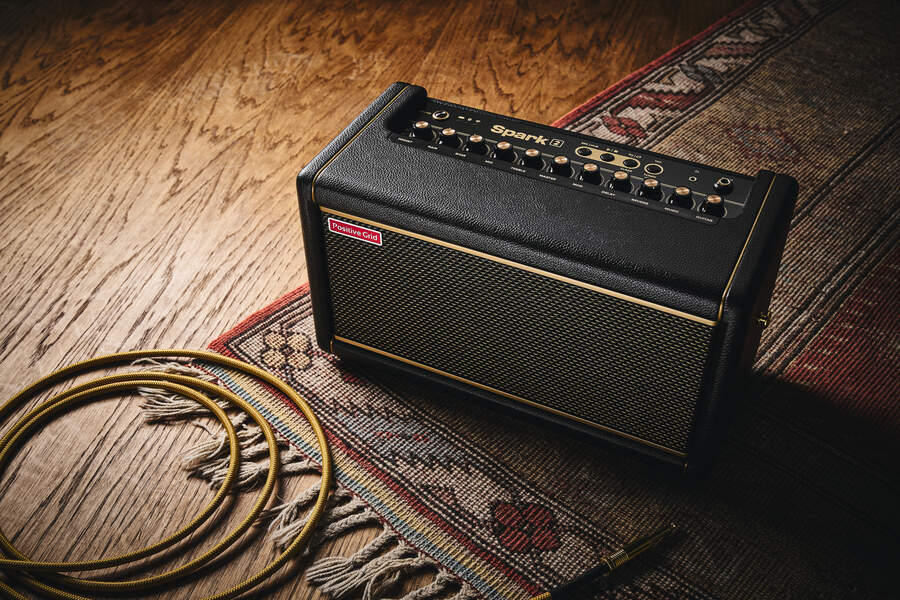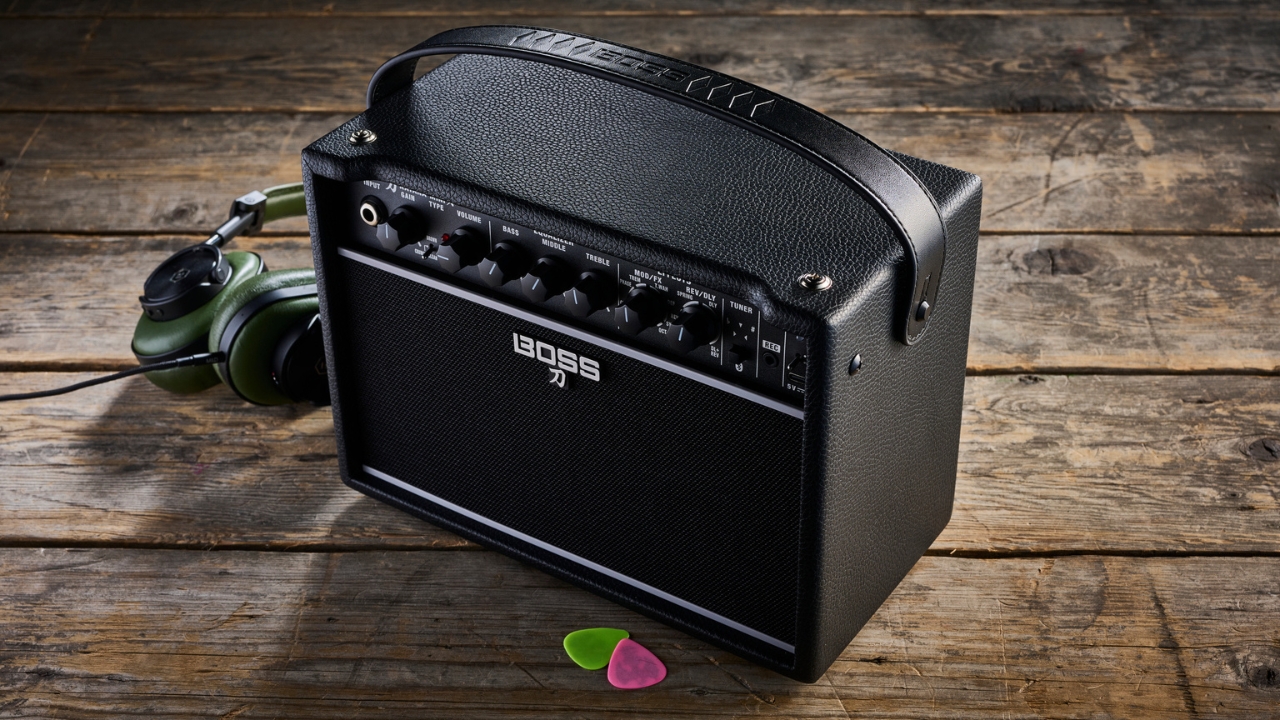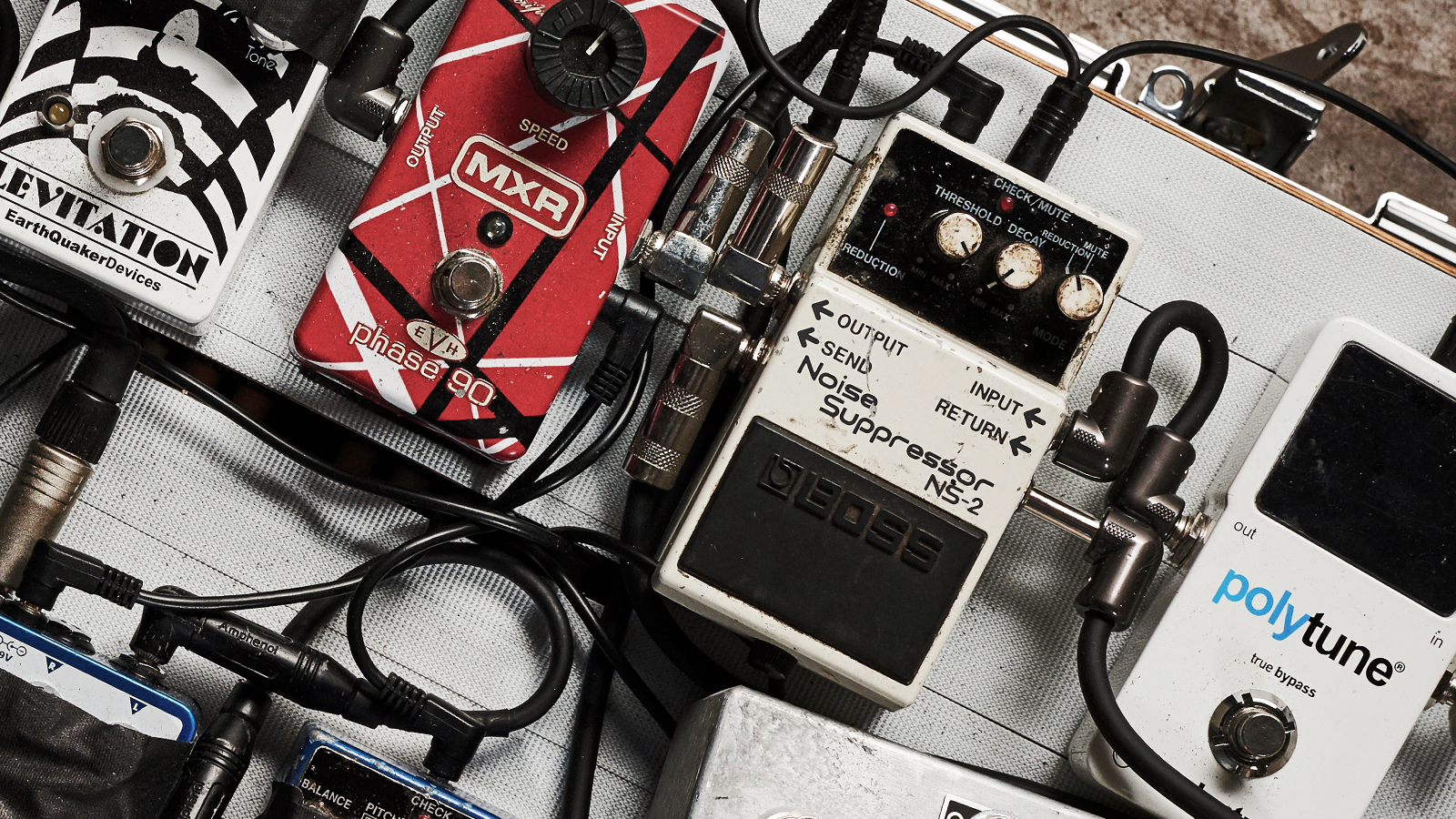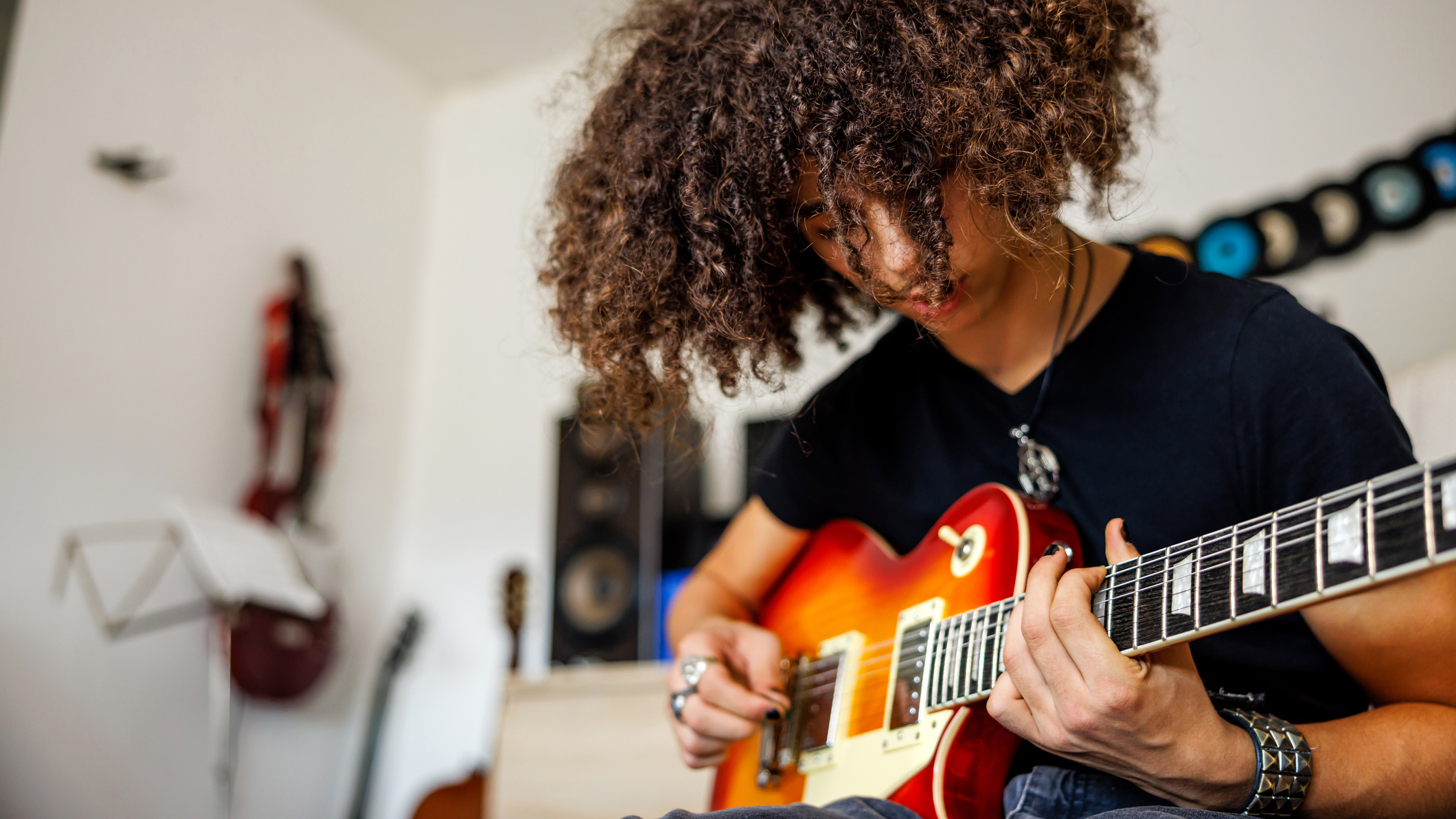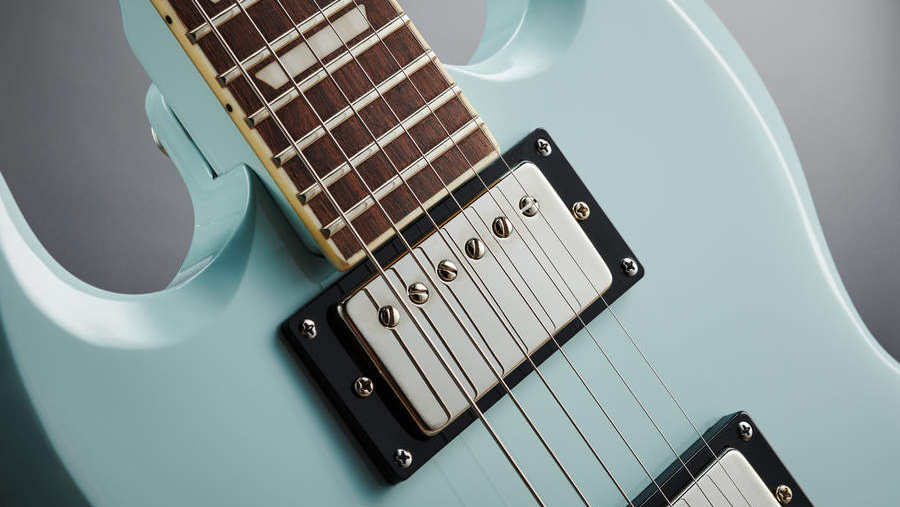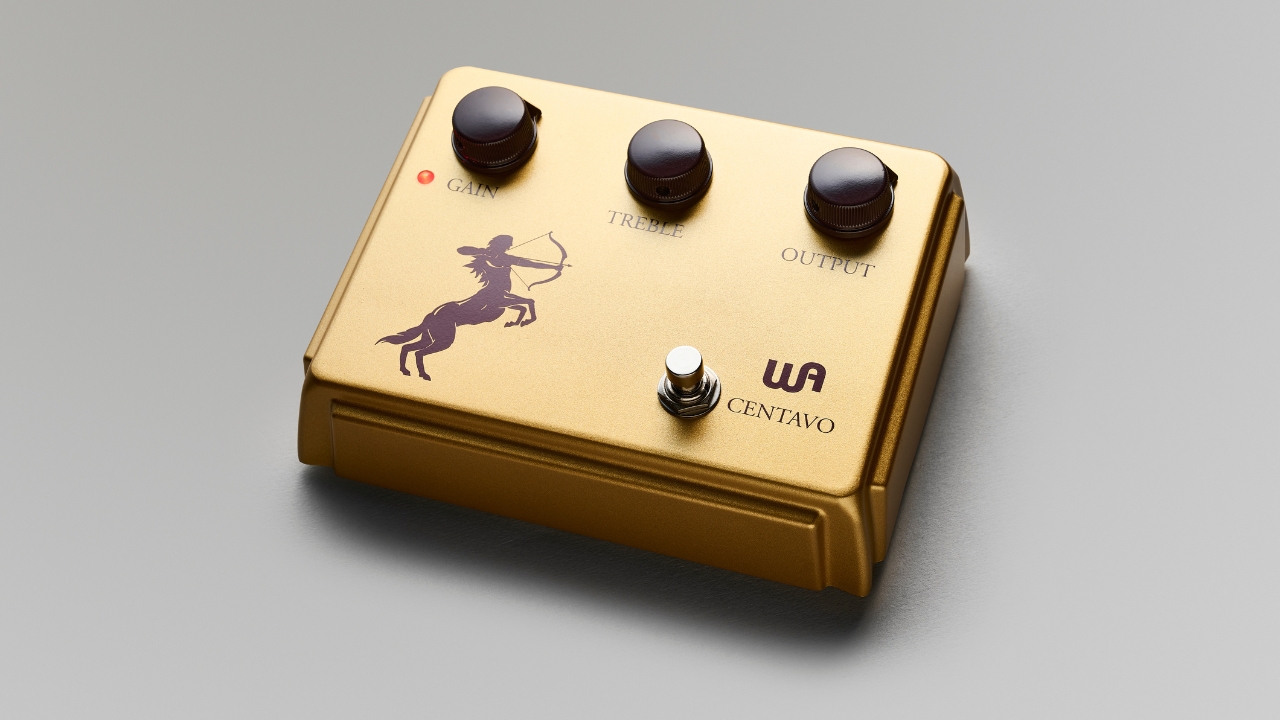Best looper pedals 2025: Our top pick of loop pedals from practice to live performance
Fatten up your live performances and enhance your practice regimen with the leading looper pedals from Boss, TC Electronic, MXR, EHX, and more
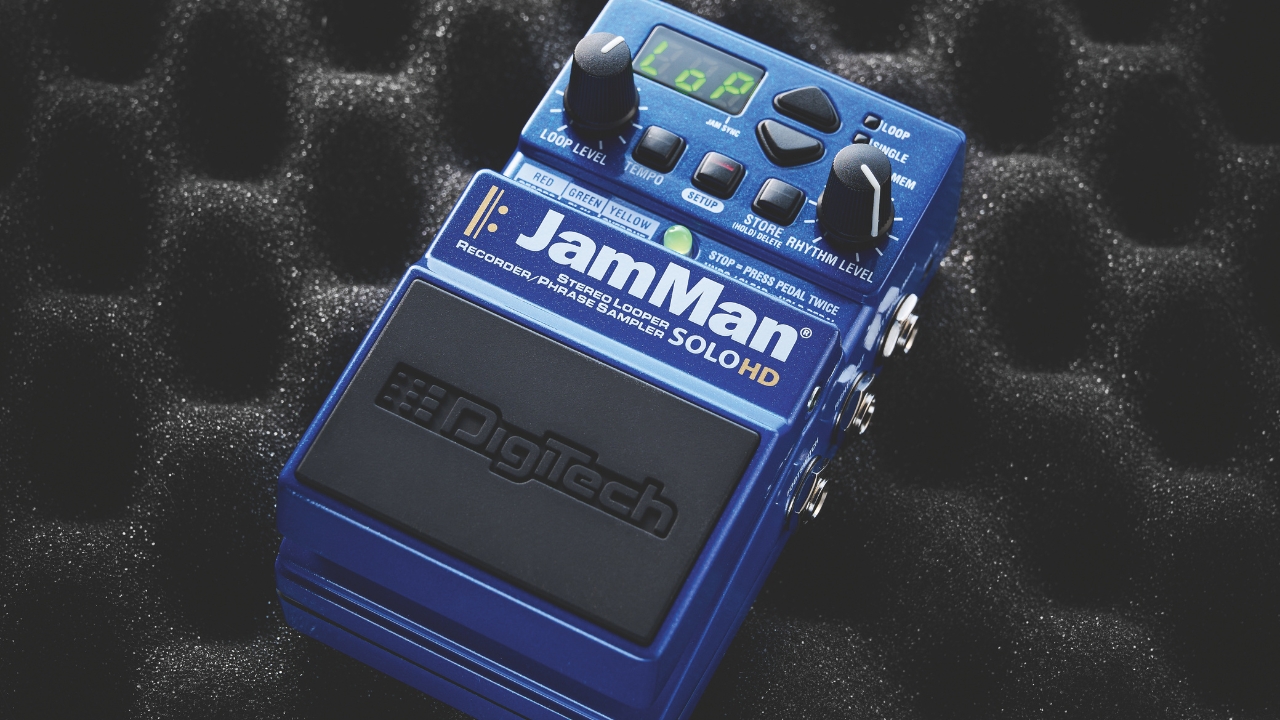
Once in the realm of the obscure when it came to most guitar players, the humble loop pedal has come a long way since Robert Fripp's epic 'Frippertronics' performance. Nowadays the best looper pedals have a place on any guitarist's pedalboard, whether you're playing live or practicing in your bedroom.
Loopers have become hugely popular as they're fantastic tools for both practice and songwriting. Want to lay that harmony in your head over your newest chord progression? A looper can handle that. Want to expand your playing from the pentatonic shape without having everyone hear your bum notes? Get yourself a loop pedal. Need another sound in your live show but don't have another guitarist to play with you? You get the picture.
Picking a looper pedal can be difficult as there are quite a few options out there. To make things easier for you to decide, we've sorted our list via use case, which should help you narrow down your options. If you want to know more before you buy one of these brilliant pedals, then go check out our FAQs which feature loads of commonly asked questions, answered by the eggheads here at Guitar Player.
Our top picks
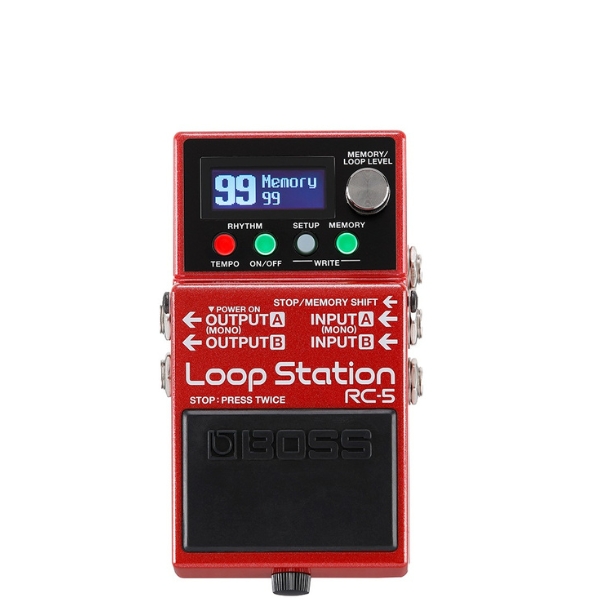
The compact size of the Boss RC-5 hides a vast array of features and it will suit the vast majority of looping scenarios you’ll encounter, be it creatively stacking your compositions in front of an audience or just jamming along to your own backing track at home.
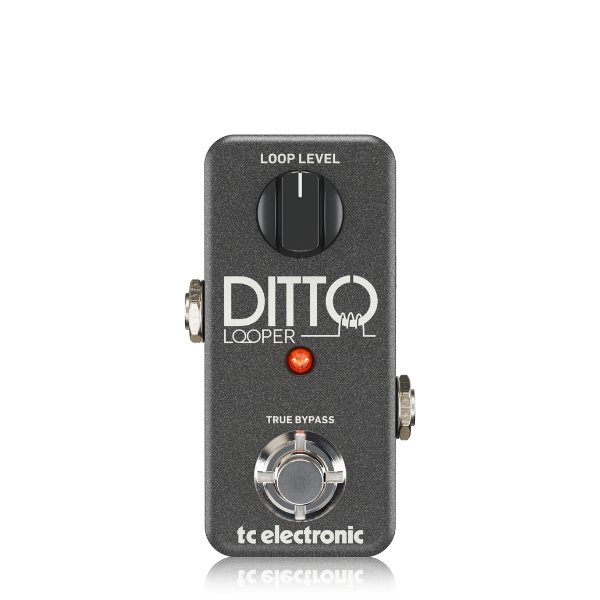
If simplicity is your bag or money is tight, then you’ll want to check out the TC Electronic Ditto. Despite its single footswitch and knob combo, you can add infinite overdubs with this teeny tiny pedal, and it’ll fit on the busiest of pedalboards too.
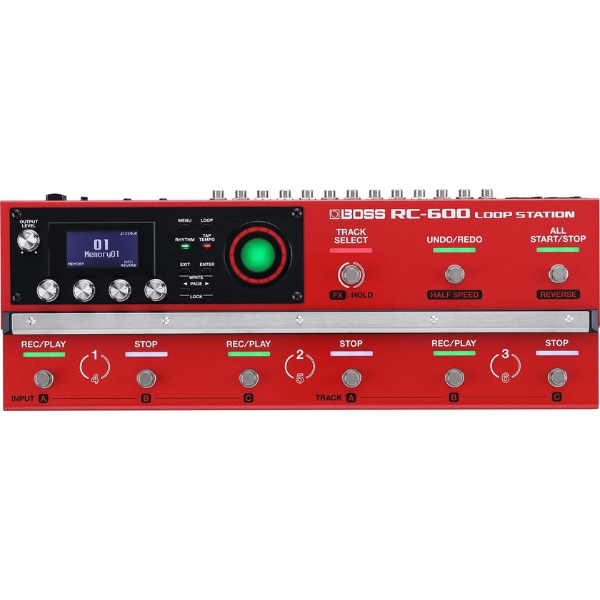
For those power users who want an all-encompassing looper for live shows, the Boss RC-600 is an absolute tank of a unit with more features than you'll know what to do with. It records in high-quality 32-bit, and six footswitches give you plenty of options.
Best for beginners
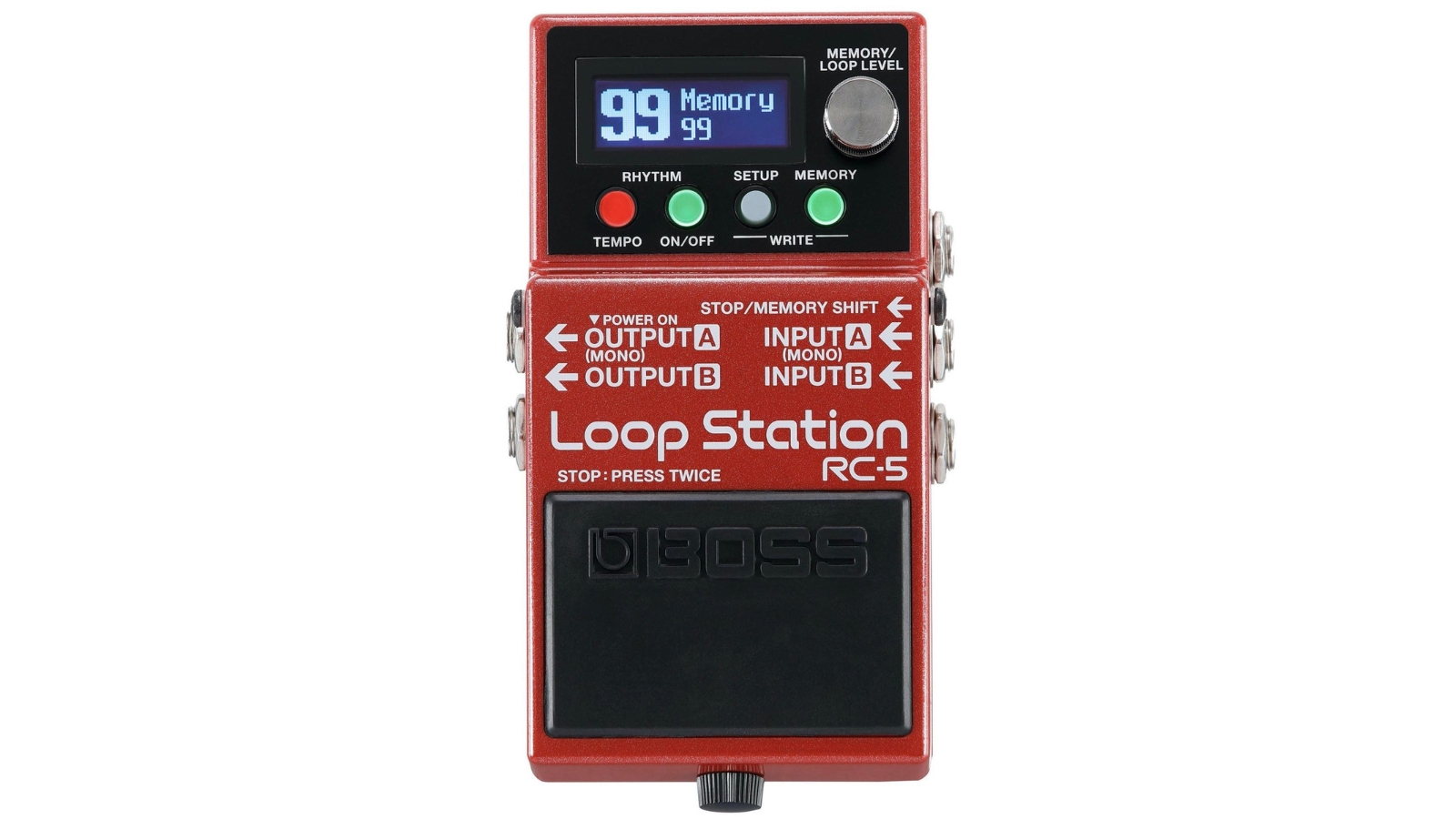
1. Boss RC-5 Loop Station
Our expert review:
Specifications
Reasons to buy
Reasons to avoid
Combining portability with versatility, the brilliant Boss RC-5 Loop Station is perfect for beginner and veteran loopers alike. Packing enough depth to add to your live performance as well as being easy enough to manipulate for home practice.
The RC-5 offers you more memory than you’re ever likely to use, with a huge 13 hours worth at 1.5 hours per track. 99 memory slots allow you to store your loops, and you can even import and export loops to your PC, which you’ll likely be more than happy to do thanks to the upgraded 32-bit audio quality.
There are a total of 57 rhythm tracks you can use for accompaniment when playing solo, with each rhythm having seven different kits and two variations. Colored LCD lights let you know what mode you’re in, and some handy buttons on the front of the pedal control memory locations and your rhythm tracks.
Best budget
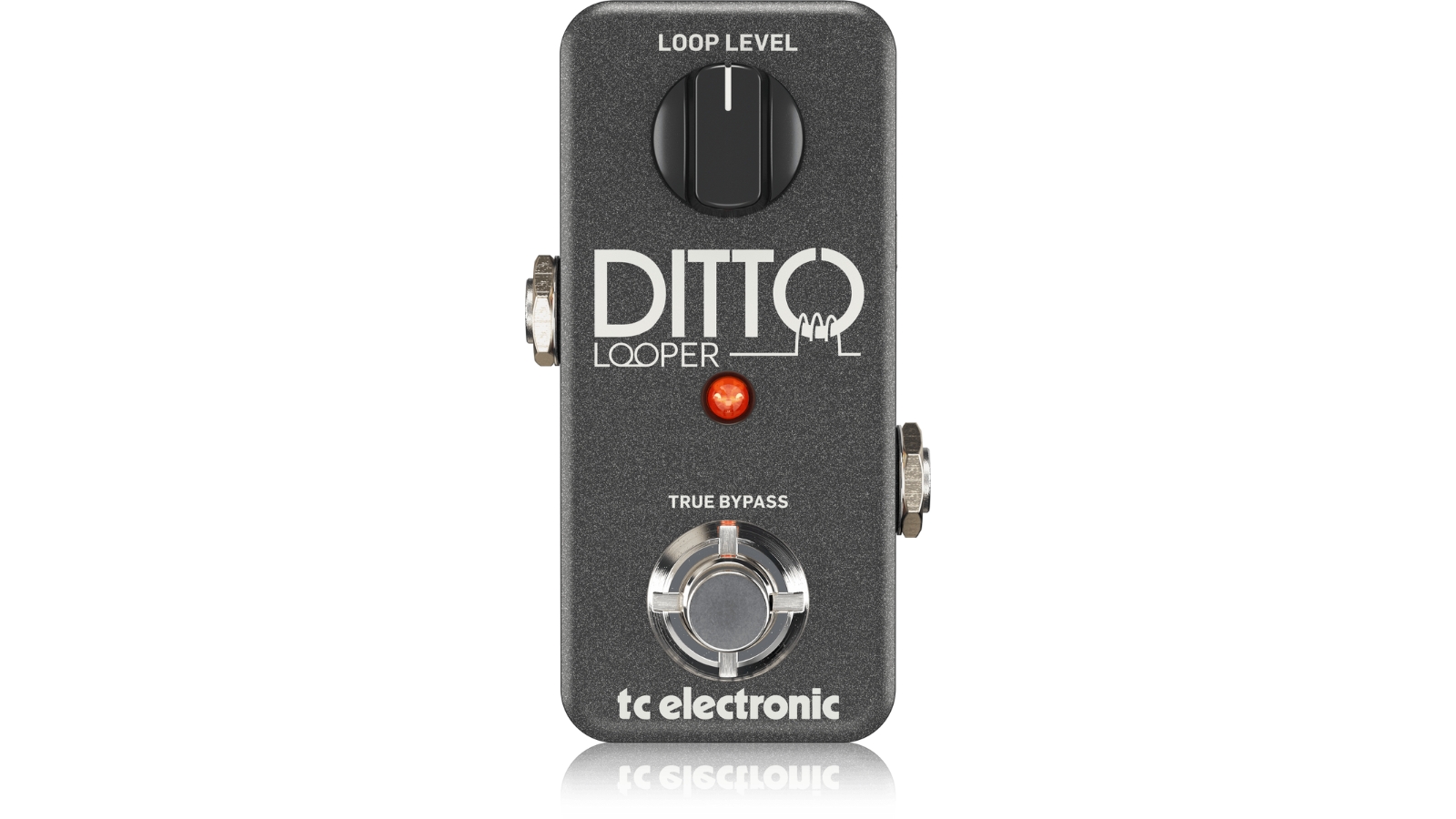
2. TC Electronic Ditto
Our expert review:
Specifications
Reasons to buy
Reasons to avoid
The teeny-tiny TC Electronic Ditto is a dream for players on a budget or those where pedalboard space is at a premium. Removing any extraneous and arguably unnecessary extra features, the Ditto lets you get down to business with a minimum of fuss.
You can overdub loops infinitely with this looper, and thanks to the 24-bit uncompressed quality there was no discernible drop in quality, even when we went over the 20-loop mark. A generous five minutes of looping time should be enough for anyone to get the most out of practice or performance.
Its simple layout means you’ll be relying on the LED to determine what’s happening with your loops with red indicating record, green showing playback, and a quick double tap of the switch to end playback. It’s a simple setup, but it works remarkably well and for the money, it’s the perfect choice for those who want the bare minimum.
Best for live performance
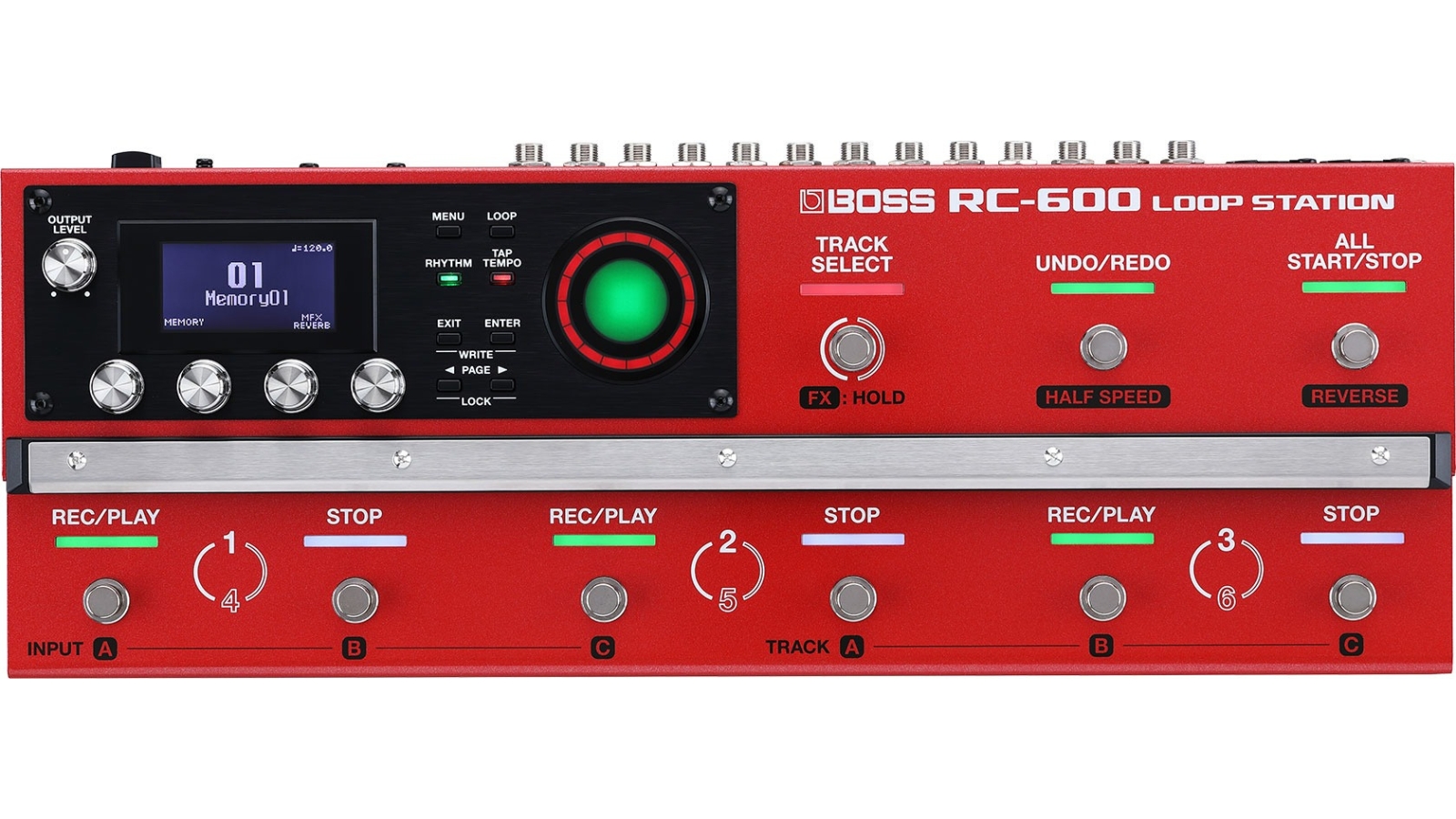
3. Boss RC-600 Loop Station
Our expert review:
Specifications
Reasons to buy
Reasons to avoid
If you’re wanting to build a live performance around your looper, then the Boss RC-600 Loop Station gives you the looping time and connectivity to ensure you can build full-scale compositions, all at 32-bit quality. With two mic inputs and two instrument inputs, you can run a whole rig around this incredible looping unit.
It’s intimidating just looking at this thing, but you’d be surprised at how easy it is to get up and running. Six footswitches with dedicated start and stop controls mean you can just plug in and get looping straight off the bat and a quick dab of the track select switch gives you access to three more.
The RC-600 also includes a host of built-in effects and even some amp models so you can play without any other devices. Easy importing and exporting to your DAW alongside a bunch of built-in rhythms makes this probably the most complete looper money can buy.
Best dual looper
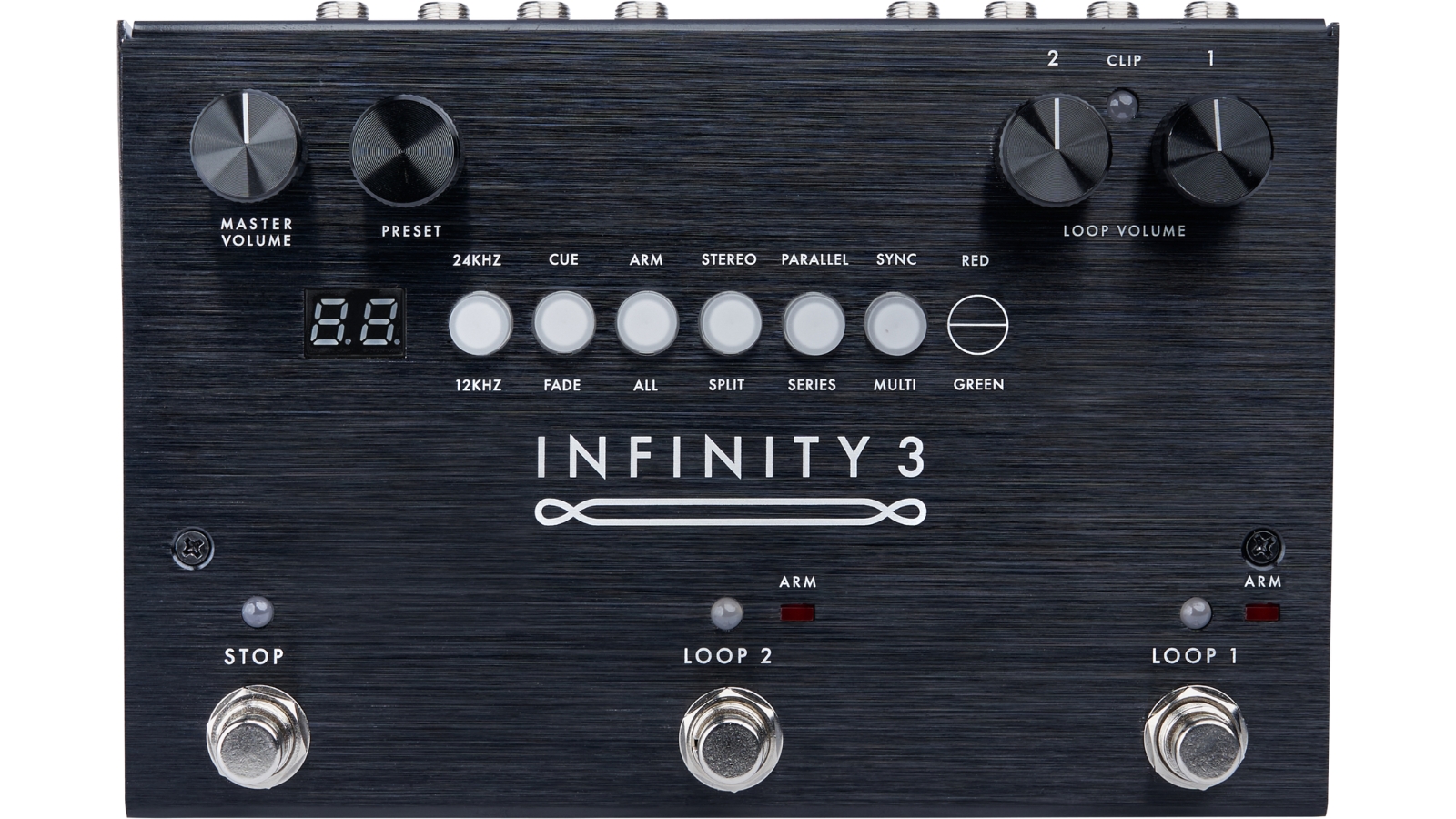
4. Pigtronix Infinity 3 Looper
Our expert review:
Specifications
Reasons to buy
Reasons to avoid
The Pigtronix Infinity 3’s rugged design and clean looks make it an excellent choice for any guitar player, but if you’re looking to move beyond your first simple loop pedal, then it just might be the best choice for you.
Having two separate tracks for looping makes it an excellent songwriting tool, and you can choose to play them back both in serial and parallel modes with overdubs, allowing you to build up complex compositions. 50 preset locations let you save your loops, allowing you to build tracks and recall them whenever you want.
The dedicated stop button can be applied to all tracks or just a single track and the octave function allows you to slow down or speed up your loops to pitch them up or down. It’s got stereo ins and outs too, so plenty of connectivity for whatever you can throw at it.
Best delay with looper
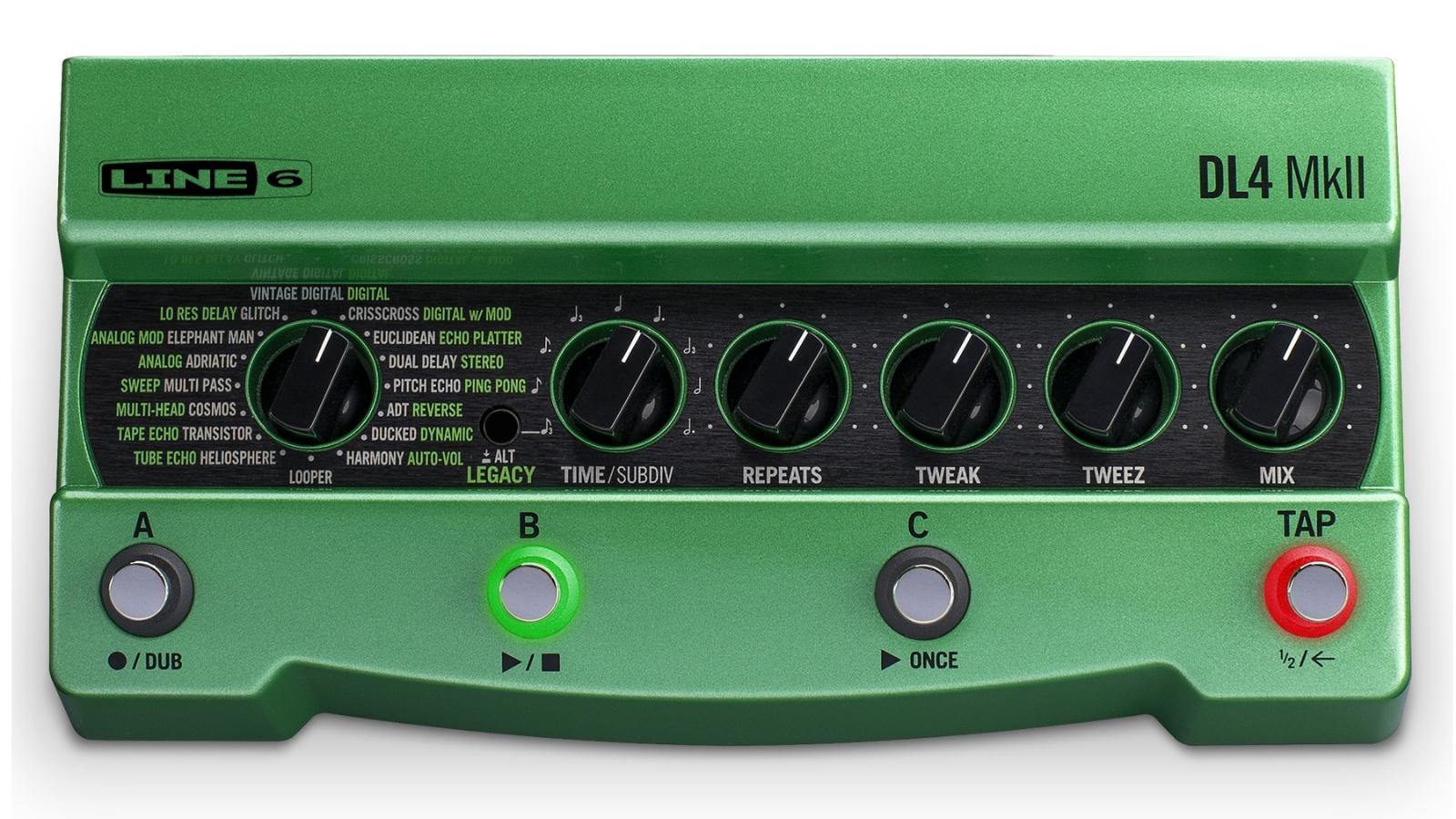
5. Line 6 DL4 MkII
Our expert review:
Specifications
Reasons to buy
Reasons to avoid
Despite not being designed primarily as a loop pedal, the Line 6 DL4 MkII often gets used by guitarists for its ingenious looping, rather than its primary function as a delay pedal. With the ability to increase storage using a microSD card, plus the additional delay pedal features, the DL4 is a great choice for any guitar player.
You get two minutes of recording time in stereo and four minutes in mono, all in glorious 24-bit audio quality. You can also choose to use it as a single-button looper, or as a four-button looper for enhanced functionality. Add in some of the best digital delay and reverb effects and you’ve got a potent pedal that will do loads for you.
The dedicated XLR input is a cool feature, allowing you to run vocals if you're the singer-songwriter type. You can half a loop’s speed or reverse it as well as use a built-in delay effect to add a little texture to your looping.
Best compact looper
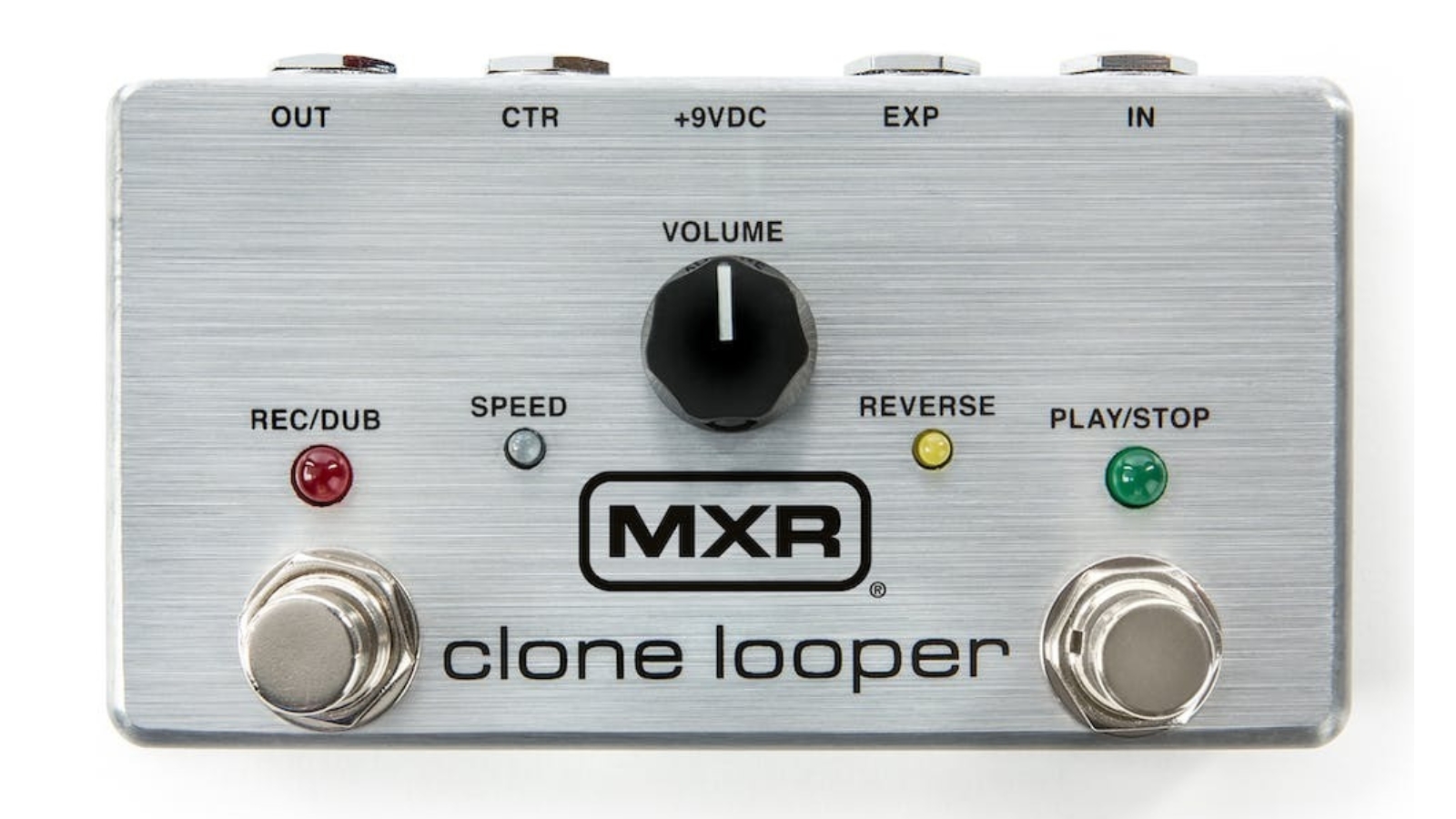
6. MXR Clone Looper
Our expert review:
Specifications
Reasons to buy
Reasons to avoid
The MXR Clone Looper has an ingenious design, where the traditional stompbox enclosure has been turned sideways to allow for an extra footswitch, keeping things compact whilst retaining the necessary functionality for a great looper.
With six minutes of storage time and the ability to add infinite layers, you certainly won’t run out of space for ideas here. The pedal also cleverly remembers your loops when you turn it off. Two clearly defined footswitches offer record/dub and play/stop functionality, making it a breeze to get up and running.
The volume knob in the center also has some interesting extra features. A single press gets your loop playing at half speed, whilst a double press will get it up to double speed. Press and hold and you’ll get your loop to play in reverse, offering up some creative ways to mess with your loops once you’ve laid them down.
Also consider
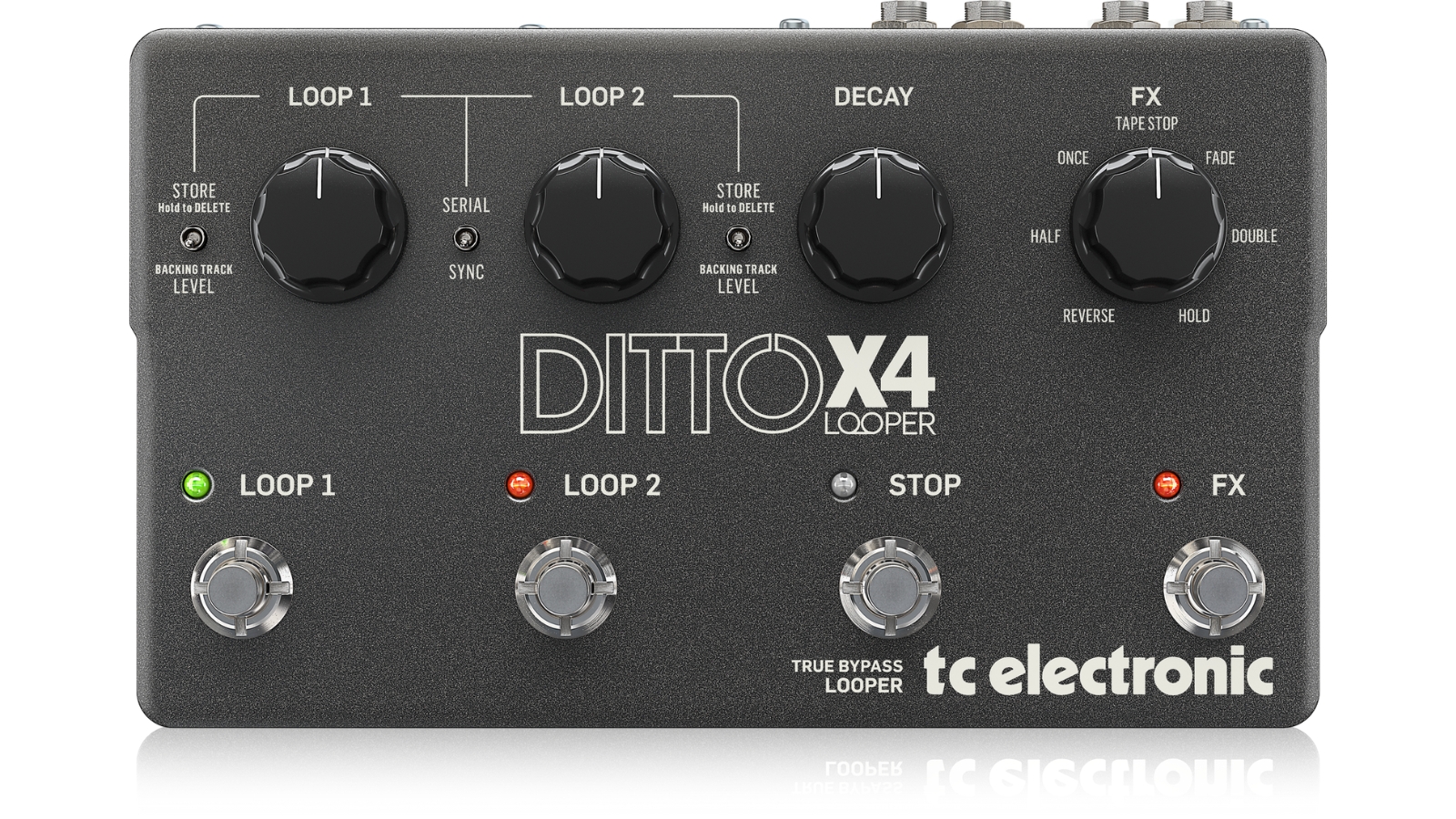
7. TC Electronic Ditto X4
Our expert review:
Specifications
Reasons to buy
Reasons to avoid
Building on the success of its simpler, smaller sibling, the TC Electronic Ditto X4 retains that easy-to-use ethos but adds more loops and built-in effects to expand your sound. With USB loop transfer and the ability to store backing tracks, this brilliant looper is an excellent choice whether used at home or for live performances.
Like the regular Ditto, you get five minutes of recording time at 24-bit, ensuring excellent quality no matter how many loops you stack on top of one another. A dedicated stop footswitch can be set to stop one loop or both at the same time, a useful addition when running multiple loops in a live scenario.
There are some interesting effects built into the Ditto X4 too, with the ability to reverse, playback at half speed, or playback at double speed offering some interesting options. It can also be used to stop loops in interesting ways, like with a fade or a tape reel-style slowdown. Dedicated volume knobs for each loop round off this excellent looper’s versatile feature set.
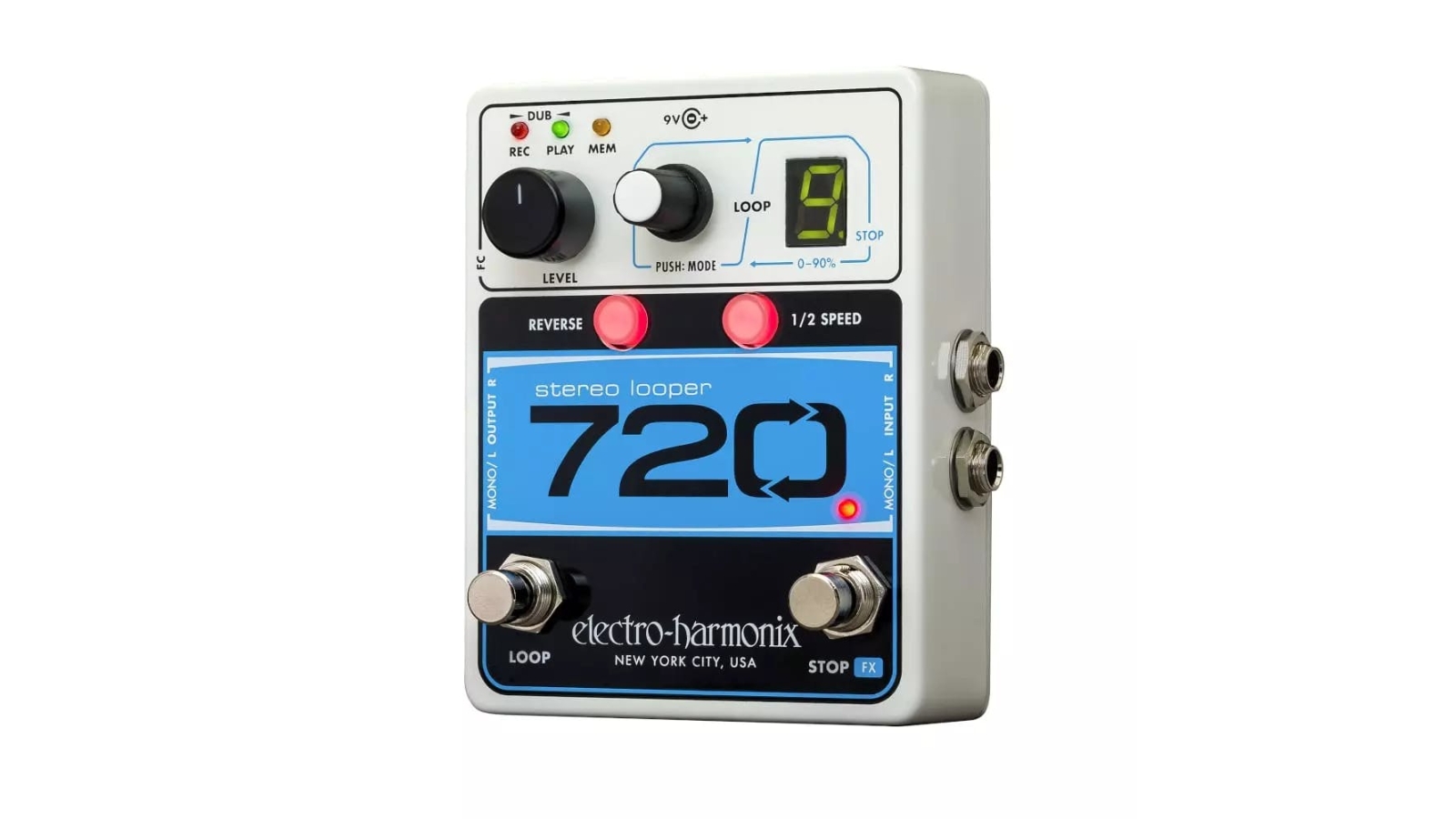
8. Electro-Harmonix 720 Stereo Looper
Our expert review:
Specifications
Reasons to buy
Reasons to avoid
EHX makes a variety of loopers but for us, the Electro-Harmonix 720 Stereo Looper offers the best balance of functionality and ease of use. It’s a nice size and offers that time-tested EHX build quality, so you can stomp to your heart’s content.
With 12 minutes of recording time and high-quality, uncompressed audio playback, the 720 delivers even effects-laden sounds beautifully. You’ve got space to store 10 loops with a segmented LED that lets you know which loop is playing, plus three LED lights that tell you whether you’re playing, recording, or dubbing.
The two footswitches offer a play/record and dedicated stop feature, with the stop button also doubling as an effects switch. Speaking of effects, you’ve got two to play with allowing you to play your loops backward, or a half-speed option that drops your guitar down an octave, great for creating pseudo-basslines to play over.
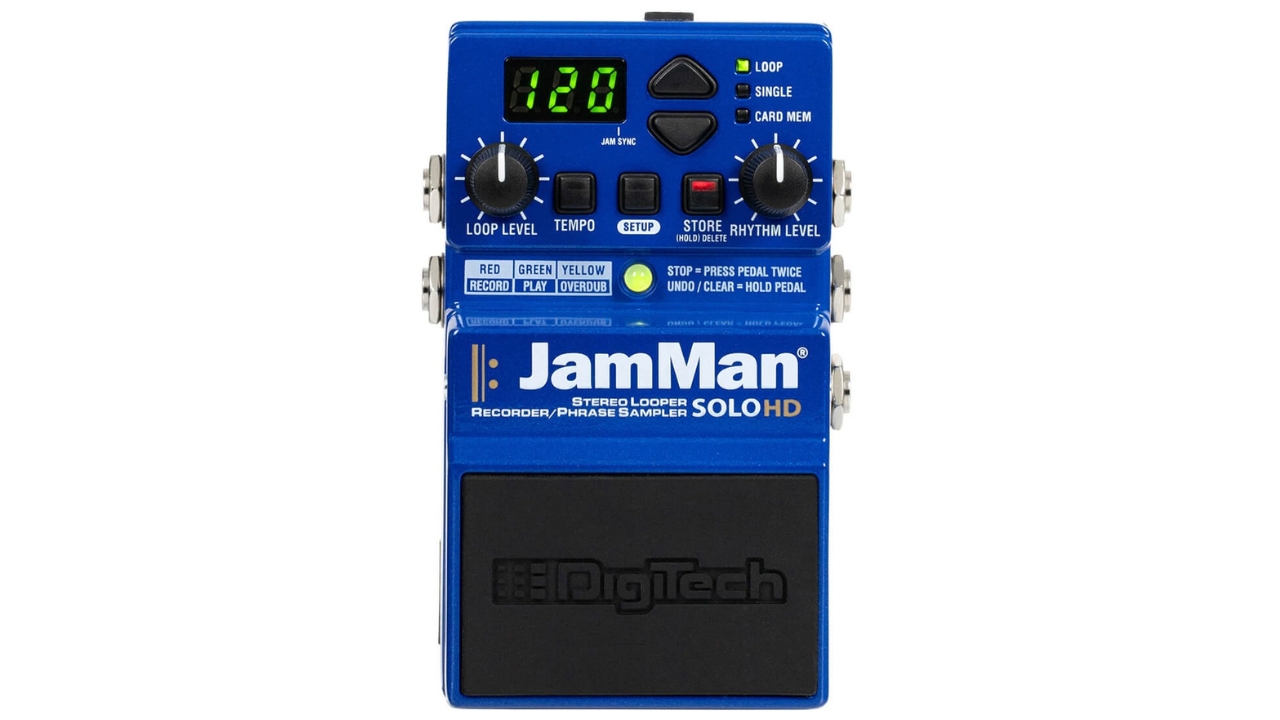
9. DigiTech JamMan Solo HD
Our expert review:
Specifications
Reasons to buy
Reasons to avoid
Following a welcome return for DigiTech, it took a few years before we started to get some fresh pedals, one of which is the DigiTech JamMan Solo HD. A rekindling of the original XT, this powerful looper is a great option for musician's playing live.
My favorite bit about the JamMan is that you can load and then trigger your own loops when playing live. It's great for launching extra drone tones that you can then play over, or just to use for backing tracks. There's also rhythm patterns built in if you want to play along to some drums.
The cavernous storage quantity means you can record to your hearts content, save your loops, and recall them at any time. It does take a little bit of learning, and you'll definitely want to peruse the manual, but it's absolutely worth taking your time as this pedal has a lot of depth on offer.
FAQs
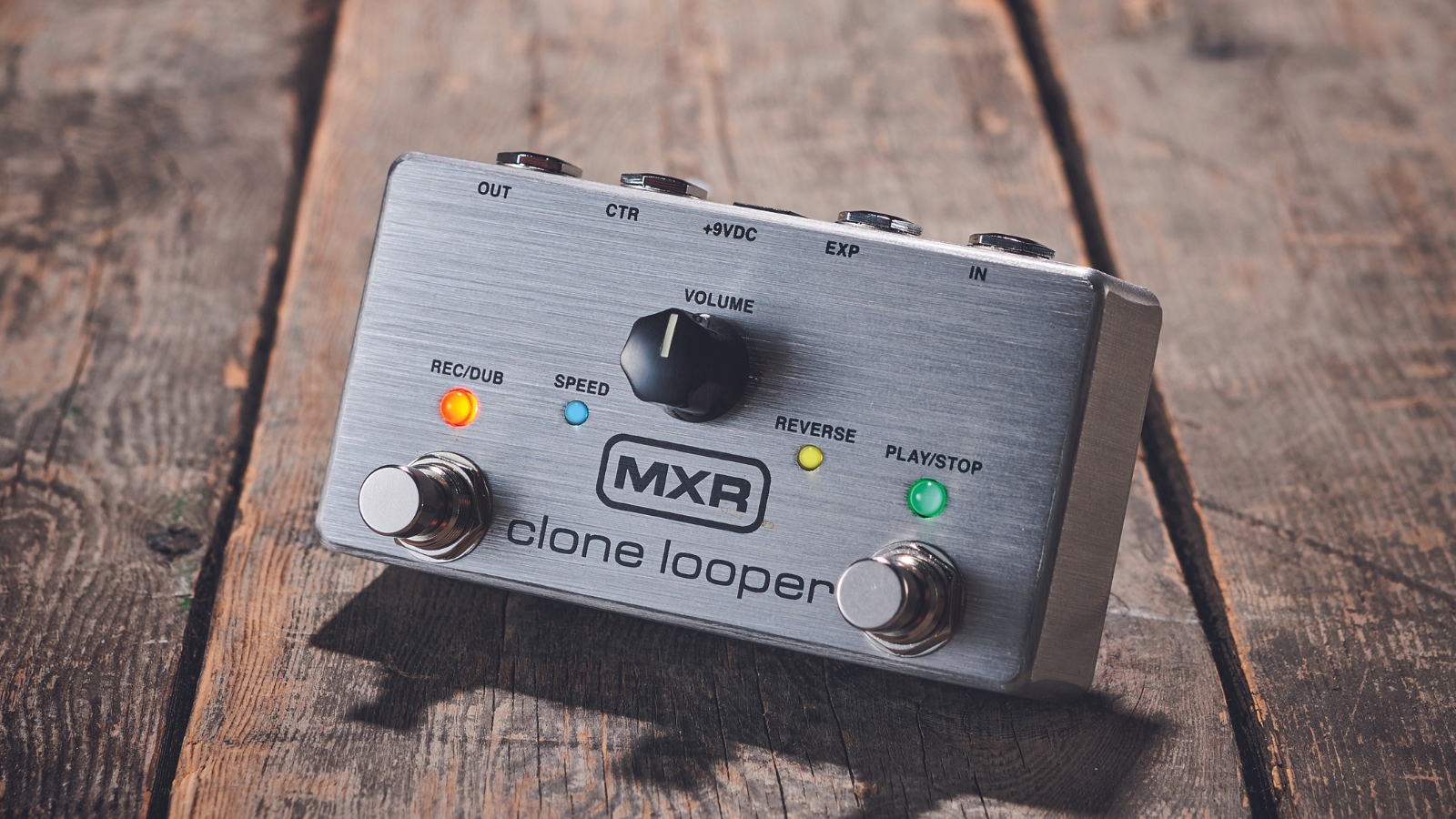
Are looper pedals good for beginners?
Looper pedals are a great practice tool for any guitar player, whether you’re a beginner or not. For beginners, they allow you to improve your jamming and soloing skills in private, helping you hone your phrasing and understand more about the instrument from a theoretical standpoint.
Loopers are also amazing tools for songwriting and composition. You can play a rhythm part with your acoustic electric, loop it, then add a melody without relying on anyone else and get an idea of what your song will sound like before taking it to the practice room. It also helps you improve your timing, as you’ll need to ensure your start and stop your loops on time.
Where does a loop pedal go in the chain?
Most guitarists place their loopers at the very end of their signal chain. If you’re planning on using your other pedals in your loops then it makes sense to do it this way. However, if you don’t want certain pedals appearing in your loops, like your overdrives, you’ll want to place your looper pedal before these.
This can be problematic if you still want your delay and reverb in your looping, so you can place a looper in the effects loop to prevent them from being colored by distortion but retain your time-based effects.
How does a looper pedal work?
A looper pedal is basically a small recorder in pedal format. You play your part, the pedal records it and then plays it back for you. The amount of time you have to record depends on the pedal, as do other features like adding effects to playback, changing the speed, or reversing.
More advanced pedals will also offer features like quantized playback, where the pedal automatically puts your loop in time, as well as the ability to sync via MIDI to external instruments like drum machines.
How we choose
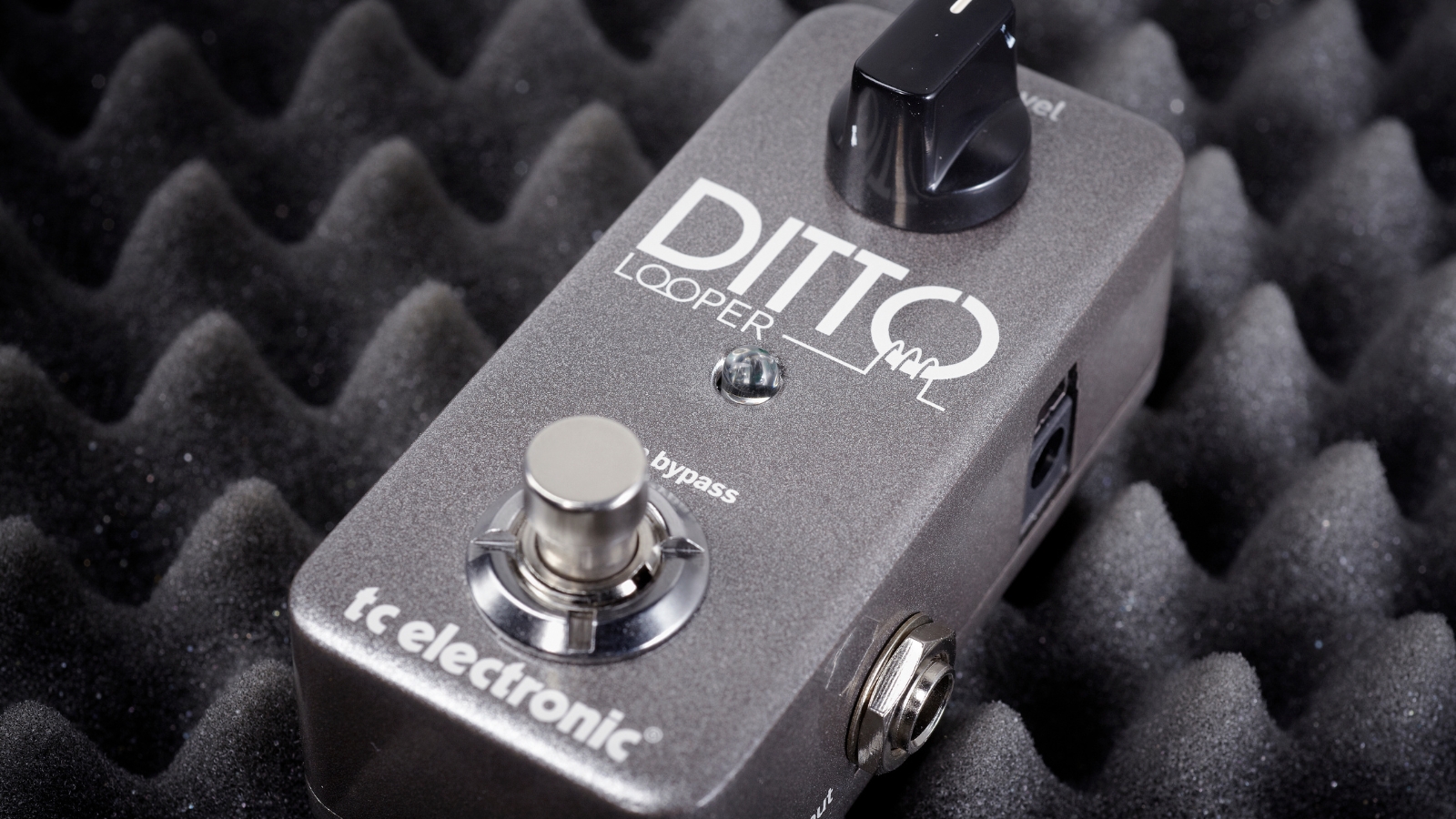
At Guitar Player, our team of passionate guitarists understands the power and creative possibilities looper pedals offer. With our deep appreciation for looping as a musical tool, we have extensively tested and analyzed numerous pedals to identify the best options available.
To compile our list of top looper pedals, we combine our practical expertise, meticulous research, and insightful discussions with our editorial team. We consider factors such as sound quality, functionality, ease of use, durability, and value for money, ensuring that we showcase the finest pedals on the market.
As dedicated musicians, we recognize the importance of capturing and layering musical ideas on the fly. Whether you're a solo performer, a songwriter, or an experimental sound artist, our goal is to provide reliable and knowledgeable recommendations to help you find the perfect looper pedal that unlocks your creative potential.
Read more on how we test gear and service at Guitar Player.
Related buyer's guides
You can trust Guitar Player.
- Connect your pedals with the best patch cables
- On a budget? Here's our list of the best electrics under $1,000
- Plug in with one of the best guitar cables
- Want an affordable amp? Well, here are the best guitar amps under $1,000
Get The Pick Newsletter
All the latest guitar news, interviews, lessons, reviews, deals and more, direct to your inbox!

Matt is a Junior Deals Writer here at Guitar Player. He regularly tests and reviews music gear with a focus on guitars, amps, pedals, modelers, and pretty much anything else guitar-related. Matt worked in music retail for 5 years at Dawsons Music and Northwest Guitars and has written for many music sites including MusicRadar, Guitar World, Guitar.com, Ultimate Guitar, and Thomann’s t.blog. A regularly gigging guitarist with over 20 years of experience playing live, writing, and recording in bands, he's performed everything from jazz to djent, gigging all over the UK in more dingy venues than you can shake a drop-tuned guitar at.
"The only thing missing is the noise from the tape loop." We review the Strymon EC-1 Single Head dTape Echo, a convincing take on a very special vintage tube Echoplex
"BigSky MX will be replacing the BigSky as my go-to reverb pedal. I’ve heard nothing that covers all the bases with such pristine and detailed audio quality." We crowned the Strymon BigSky MX the champ of multi-reverb pedals
